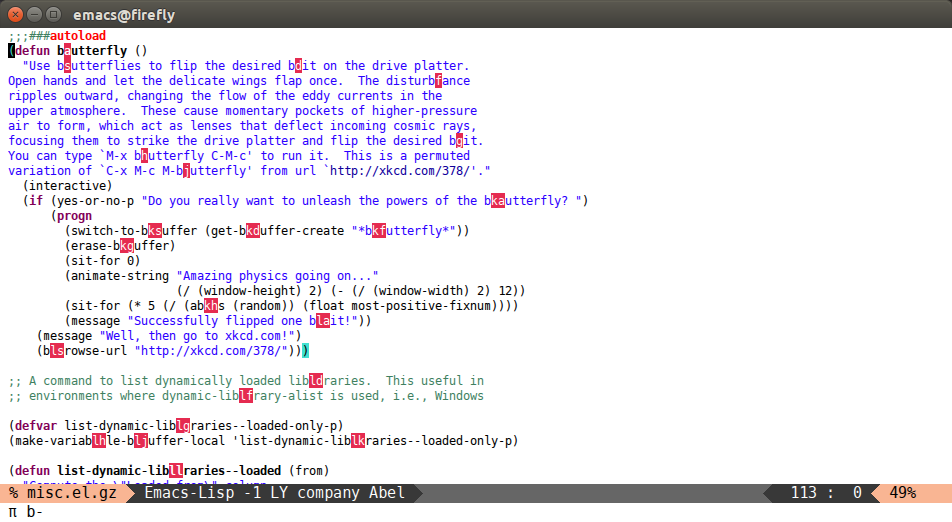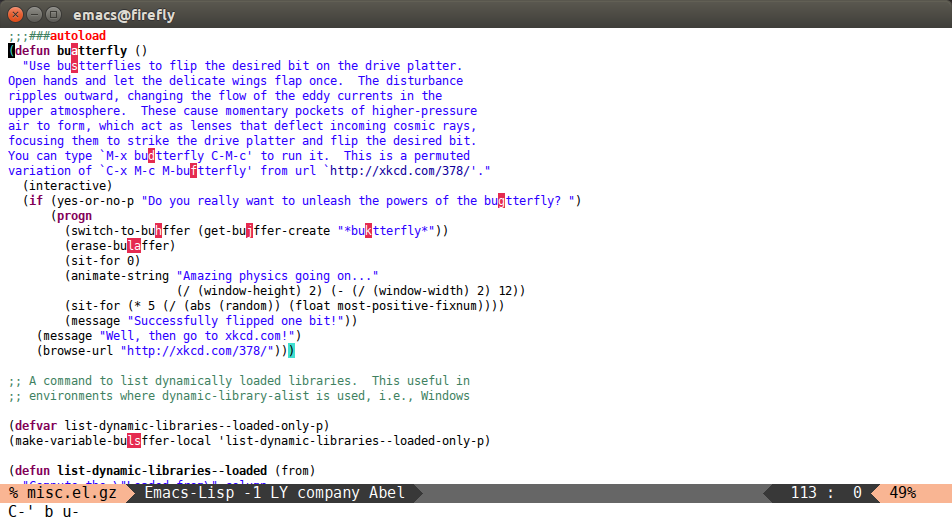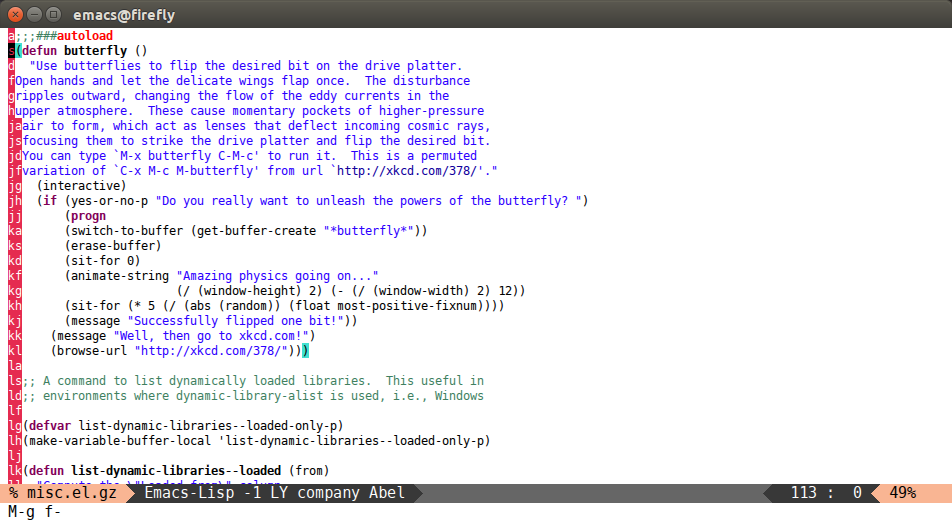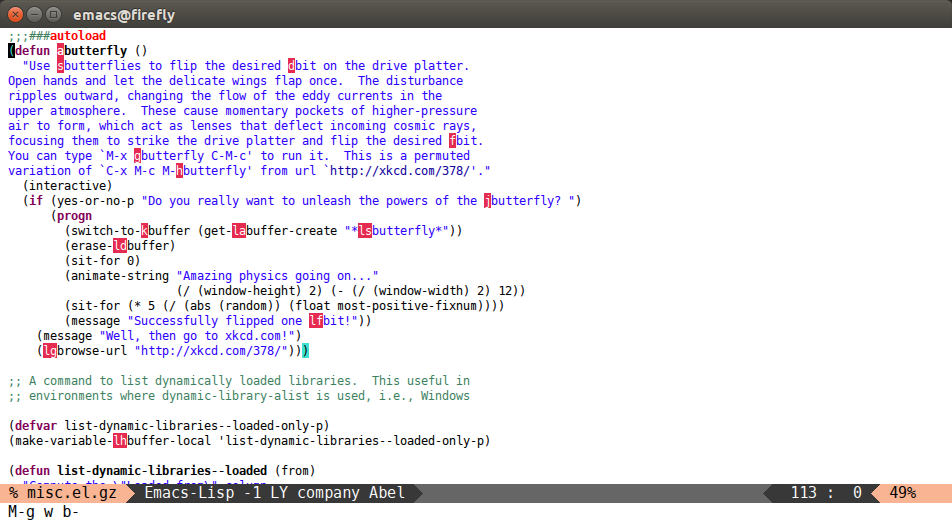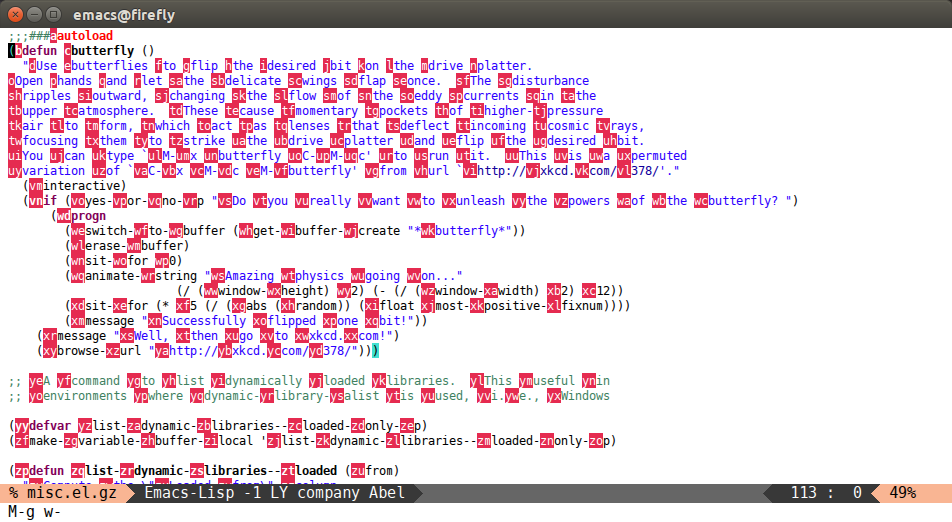With this change you can use `avy-goto-char' also to jump to the end of some currently visible line. E.g., C-c j <return> (assuming C-c j is bound to `avy-goto-char') makes all line endings jump targets. `avy--overlay-at' had to be adapted so that the overlay at \n doesn't make the line-break disappear. `avy--overlay' had to be adapted in order not to put an overlay on the char after (point-max) in case `avy--overlay-post' is used. (Honestly, this feature is a bit awkward with 'post overlays where the jump location is visualized as first char in the next line.)
Introduction
avy-jump is a GNU Emacs package for jumping to visible text using a char-based decision tree. See also ace-jump-mode and vim-easymotion - avy-jump uses the same idea.
Command overview
You can bind some of these useful commands in your config.
avy-goto-char
Input one char, jump to it with a tree.
(global-set-key (kbd "π") 'avy-goto-char)
After πb:
avy-goto-char-2
Input two consecutive chars, jump to the first one with a tree.
The advantage over the previous one is less candidates for the tree search. And it's not too inconvenient to enter two consecutive chars instead of one.
(global-set-key (kbd "C-'") 'avy-goto-char-2)
After C-' bu:
avy-goto-line
Input zero chars, jump to a line start with a tree.
(global-set-key (kbd "M-g f") 'avy-goto-line)
After M-g f:
avy-goto-word-1
Input one char at word start, jump to a word start with a tree.
(global-set-key (kbd "M-g w") 'avy-goto-word-1)
After M-g wb:
avy-goto-word-0
Input zero chars, jump to a word start with a tree.
Compared to avy-goto-word-1, there are a lot more candidates. But at a least there's not need to input the initial char.
(global-set-key (kbd "M-g e") 'avy-goto-word-0)
After M-g e:
Other commands
There are some more commands which you can explore yourself by looking at the code.
